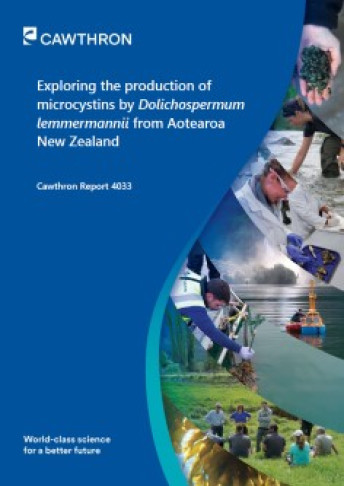The Ministry for the Environment commissioned the Cawthron Institute to assess if the cyanobacterial species Dolichospermum lemmermannii currently present in New Zealand waterbodies can produce microcystin. This report details the methodology and analysis utilised to confirm that the examined variety of Dolichospermum lemmermannii cannot produce microcystins.
The Ministry for the Environment commissioned the Cawthron Institute to assess if the cyanobacterial species Dolichospermum lemmermannii currently present in New Zealand waterbodies can produce microcystin. This report details the methodology and analysis utilised to confirm that the examined variety of Dolichospermum lemmermannii cannot produce microcystins.
Cyanobacterial blooms are becoming increasingly common in waterbodies around Aotearoa New Zealand. While many bloom-forming species are not known to produce toxic chemicals, some species can produce natural toxins, known as cyanotoxins, which pose a health risk to humans and animals. To protect human health, we require accurate knowledge of the cyanobacterial taxa that produce cyanotoxins in Aotearoa New Zealand.
The cyanobacterial species Dolichospermum lemmermannii is currently categorised as non-toxic in Aotearoa New Zealand. However, toxin-producing examples of Dolichospermum lemmermannii have been observed overseas and examples of this species from Aotearoa New Zealand have been shown to possess some of the genes required to produce the hepatotoxic cyanotoxin microcystin. This raised concern that there might be a chance that Dolichospermum lemmermannii from Aotearoa New Zealand could produce microcystins.
To address this concern, Cawthron Institute was commissioned to perform genetic and chemical analysis on Dolichospermum lemmermannii cultures to determine its cyanotoxin production potential. As a result, the combined evidence from the LC–MS/MS analysis and microcystin synthase gene cluster sequencing demonstrated that Dolichospermum lemmermannii CAWBG680 cannot produce microcystins, reducing the potential risk this species poses to human or animal health in Aotearoa New Zealand.
Find out more about Aotearoa New Zealand Cyanobacteria Guidelines in Recreational Freshwaters.
